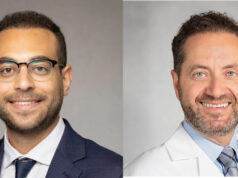
Just over a week ago, I was racing my medical school vascular surgery attending, Dr. Adam Doyle, down a Breckenridge run memorably named “The Devil’s Crotch.” We were celebrating fresh powder, the conclusion of an excellent fellows program, and the opportunity to reconnect with old students (for him), and with familiar faculty and friends (for me). The conference also gave me the opportunity to reflect on the start of my chief years (I am currently a 4th-year integrated resident), and on the lessons I took away from the course.
As other residents and I swapped stories from the trenches, we frequently shared tales about those who came before us—the residents who raised us. One or two stood out, and when I thought about why this was—why we all talked about them with such high regard—I realized that these were residents who not only cared about teaching us but trusted us enough to give us the opportunity to fail. As a medical student, these were residents who told me how to pull a drain and didn’t supervise me the second time I did it; as a resident, this was the difference between the residents who showed me how to use the Perclose for the 1 millionth time, and the ones who let me deploy them and accepted the consequences.
Succeeding in these training-level-appropriate quests builds confidence for both parties and sets the stage for unlocking the next level. As we enter the era of Entrustable Professional Activities (EPAs), I think that, within the arena of internal mentoring (resident to resident), we should consciously consider entrustable training activities. While turning away and letting someone else do something for the first time is actually hard (a recent discovery), I do think it is as important as ever to ensure that, as chief residents, we are giving junior residents and medical students time and opportunity to execute independently. Although letting a junior discover the “vein of pain” independently might result in a little extra work for the supervisor up front, that resident will certainly not forget where it lives the next time (thank you, Victoria, if you’re reading this, and to the general surgery resident who learned this last month: you’re welcome).
As important as it may be to look upwards for inspiration, so too is it important to look outwards. A second personal (and potentially more controversial) takeaway from the Vascular and Endovascular Surgery Society (VESS) Annual Winter Meeting 2025 (Feb. 6–9) in Breckenridge, Colorado, can be summed up as “do as they do, not as they say.” During an industry-sponsored session on leadership in vascular surgery, one of the panelists described how she performed the first transcarotid artery revascularization (TCAR) at her institution, only to have this practice suspended by the division chiefs of two other departments. Subsequently, a patient presented who was anatomically best suited for a TCAR; those chiefs asked her to intervene, and TCAR then gained a foothold at this institution. While this person’s advice was “ask first, don’t make the same mistake I did,” my takeaway was the complete opposite. Do the right thing, ride the waves you make, and, ultimately, something good might come of it.
Both Dr. Doyle and I are former ski racers, so the concept of tolerance of a certain level of risk is familiar to us, which explains how we ended up on the “Devil’s Crotch.” But whether the memorable event is a ski run, performing an entrustable training activity for the first time, or making waves performing an intervention at a new institution (and asking for forgiveness, not permission), making it memorable is well worth the effort.
Claire Motyl is an integrated vascular surgery resident at the University of Alabama at Birmingham.












